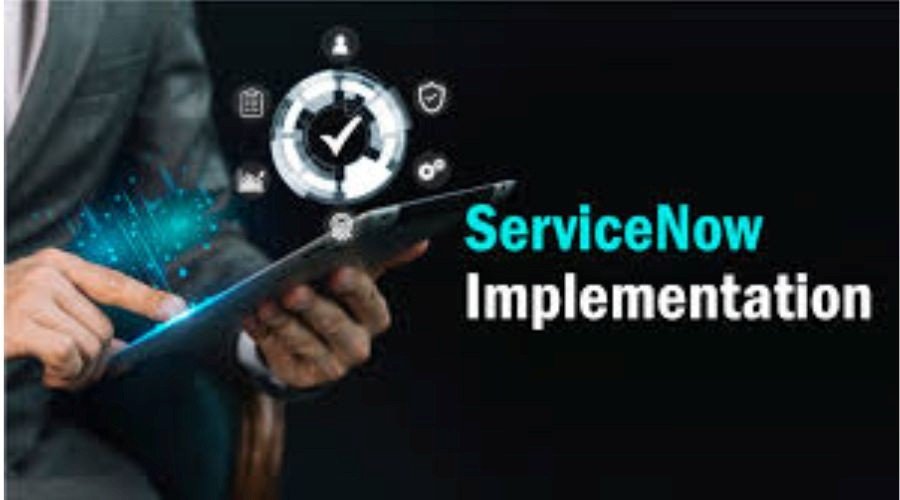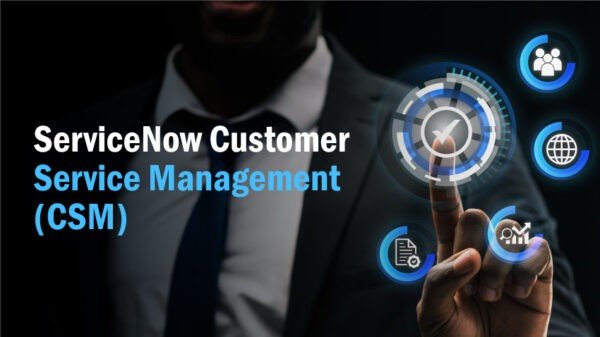ServiceNow Implementation: Best Practices and Adaptive Framework
14 +
Years of Experience
550 +
Happy Customers
250 +
Years of Tech Leadership Exp.

"License Reseller" and "Consulting & Implementation" Partner

Setting up a strong enterprise platform isn’t just a technical task; it’s a strategic plan that affects people, processes, and technology. Customers of ServiceNow often have trouble getting people to use the software, get frustrated, and see little return on their investment when they skip basic steps. Companies that follow best practices, on the other hand, can get the most out of the platform and see results quickly. In this article, let’s talk about the ServiceNow Adaptive Implementation Framework (SAIF), best practices that the community agrees on, and how we at DevTools can help you through your implementation journey.
Recognition Underscores the Stakes
ServiceNow’s leadership in AI‑powered IT Service Management (ITSM) has been validated by Gartner.
In the 2025 Gartner Magic Quadrant for AI applications in ITSM, ServiceNow is the only company to be named a Leader. The platform also ranks first in critical capabilities for ITSM practitioners and autonomous ITSM use cases.
These accolades underscore ServiceNow’s commitment to embedding AI, data, and workflow automation into the heart of IT and beyond. For organizations investing in ServiceNow, proper implementation is essential to realizing these benefits.
Additionally, ServiceNow is also named a leader in areas such as CRM, FSM, SPM and Value Stream Management, Risk Management, Software Asset Management, Task-Centric Automation Software, and last, Building and Managing AI Agents. This alone shows ServiceNow’s commitment to Business Transformation.

What is SAIF and Why Does it Matter?
The ServiceNow Adaptive Implementation Framework (SAIF) provides a repeatable, scalable methodology for ServiceNow Implementation. SAIF comprises four pillars: ServiceNow Implementation Methodology (SIM), ServiceNow Technology, ServiceNow Collateral and Assets, and ServiceNow Expertise. The goal is to deliver implementations that are globally consistent, flexible, and reliable. By following SAIF, customers get dependable, repeatable and efficient deployments that leverage core platform capabilities.
Phases of the ServiceNow Implementation Methodology
SAIF’s SIM breaks the project into five phases:
- Initiate: Define objectives and scope. Documentation and iterative stakeholder workshops clarify what needs to be accomplished in Implementation.
- Prepare: Design the solution prototype and architecture. Create business requirements (BRD), functional requirements (FRD) and solution design documents. This blueprint ensures alignment before customization & development begins.
- Create: Configure and customize the ServiceNow Instance to meet the requirements. The team develops the solution, incorporating the requirements, unit testing and user‑acceptance testing (UAT).
- Transition: Make the necessary changes in the lower environment, which is usually termed as development and then to production after rigorous testing. Plan user training and cut‑over activities to ensure a smooth go‑live.
- Close: Provide post‑implementation support and prepare documentation.
By adhering to these stages, organizations can reduce risks and deliver value faster.
Additional Implementation Best Practices
Beyond the SAIF methodology, ServiceNow experts recommend several practices that help ensure success:
- Engage ServiceNow Professional Services or certified partners: The ServiceNow Adaptive Implementation Framework was designed by ServiceNow Professional Services to guide customers. Consulting partners bring the expertise and assets needed for complex deployments.
- Use Guided Setup: ServiceNow’s ITSM Guided Setup leads administrators through configuration tasks aligned with the best practices in the industry. New releases add capabilities like process guidance for Incident, Problem and Change management.
- Leverage product documentation and knowledge bases: For application-specific best practices, consult the product documentation and knowledge base articles. This ensures alignment with the latest platform capabilities when ServiceNow is being implemented on the new Instance.
- Establish governance and a support model: Put a solid governance model in place from the start. ServiceNow provides a Governance best practices platform support model that describes required roles such as platform owner, business analyst, architect, and developer.
- Decide on an instance strategy: Most companies can run everything on a single instance, but some choose multiple instances based on tenancy requirements. Consider how you will manage administrative rights and data models.
- Promote adoption and expansion: The Champion Enablement Community offers tools and templates to introduce ServiceNow to your enterprise and encourage expansion. Provide adequate training and change‑management support to avoid low adoption to users and admins internally.
- Plan migrations carefully. Name your update sets consistently and define an order for migrating changes. Use ServiceNow’s Development Path guidance for best practices.
Business Challenges Solved by Structured Implementation
Following an adaptive methodology and best practices addresses several key implementation challenges:
- Initiate and Prepare Phases: The Initiate and Prepare phases work to document all information and achieve alignment because this method stops unexpected surprises from occurring during build and deployment.
- Lack of standardization: SAIF ensures global consistency across deployments. The process eliminates unnecessary work while producing better results.
- Technical debt and over‑customization: The guided setup in Prepare enables teams to prevent excessive customization while using built-in solution features.
- Change management: The Transition and Close phases of change management include training and support to help employees learn new processes, which prevents productivity from decreasing.
- Governance gaps: A governance model together with its support structure needs to be established at the beginning to stop security and compliance problems from developing.
How DevTools drives successful ServiceNow implementations
DevTools has expertise in delivering ServiceNow projects across industries. Our ServiceNow implementation services build on SAIF but are tailored to your organization’s strategic goals.
The key factors we focus on are
- Project scoping and roadmap creation: We begin working with required stakeholders, articulate your objectives, and prioritize capabilities once we have the list of requirements/goals. We map business processes to ServiceNow modules and identify quick wins.
- Architectural design: Our architects design a scalable architecture aligned to your organizational standards. We integrate ServiceNow with your existing tools and data sources using industry best practices.
- Configuration: DevTools’ certified experts configure ServiceNow modules and, when necessary, build scripts if necessary using best practices. We leverage low‑code tools to accelerate delivery while maintaining upgradeability.
- Data migration and quality assurance: We plan and execute data migration (if migrating from another platform), ensuring data accuracy and integrity. Testing validates the solution before go‑live.
- Training and change management: To encourage adoption, we provide tailored user training for end users. We develop communication plans to foster a culture of continuous improvement.
- Post‑go‑live support and optimization: DevTools offers managed services and ongoing maintenance services. We monitor the platform usage, gather feedback, and adjust processes to maximize ROI.
Conclusion
ServiceNow’s recognition as a leader in AI‑enabled ITSM & other areas demonstrates the platform’s potential, but achieving that potential requires disciplined implementation. The ServiceNow Adaptive Implementation Framework breaks the project into clear phases and provides a repeatable process. Combining SAIF with community best practices, such as guided setup, governance models, training, and change management which reduces risk and accelerates value. As a ServiceNow consulting and implementation partner, DevTools brings the expertise needed to apply these principles to your organization. By investing in thoughtful planning and execution today, you will realize transformational outcomes tomorrow.
FAQs
What is the implementation of ServiceNow?
ServiceNow deployment requires organizations to set up the platform for their specific workflow requirements and data management and process execution. The implementation process involves more than technical configuration because it requires departmental integration and task automation to establish new work processes. A correct deployment of ServiceNow will establish the system as the central operational platform for IT and HR and customer service and business operations throughout the organization.
ServiceNow implementation serves as an essential business requirement that enables organizations to operate with maximum efficiency.
Modern businesses operate in complex, fast-moving environments where manual processes simply can’t keep up. ServiceNow implementation enables organizations to merge multiple separate systems into a single digital workflow platform. The system enables teams to access better visibility, which allows them to execute quick decisions through efficient collaborative work. The system operates as a necessity because it converts basic business operations into automated intelligent systems that produce quantifiable results.
What are the benefits of ServiceNow implementation?
A well-planned ServiceNow implementation brings tangible benefits. The system operates with improved operational efficiency through its automated processes which connect all organizational data points. The system provides better employee and customer satisfaction through its simple self-service interface and artificial intelligence-based customer support system. The system reduces costs through automated error prevention and tool elimination and enables organizations to adapt their operations for growing business needs. The system includes built-in compliance and governance features, which support both security and accountability requirements.
What are the stages of ServiceNow implementation?
ServiceNow implementations follow the Adaptive Implementation Framework (SAIF) which organizes the process into distinct stages. The process begins with project activation and goal establishment, followed by designer creation of plans and specifications. The creation phase requires organizations to perform configuration work and development and testing activities until their system reaches go-live readiness and user training can begin. Finally, the closing phase ensures support, feedback collection, and continuous improvement. This structured approach keeps projects on track and reduces risk.
How long does a ServiceNow implementation take?
The project timeline will depend on the extent of work and the level of project complexity. The deployment time for IT Service Management or HR Service Delivery as independent modules extends to two months, but large enterprise deployments require at least six months of implementation time. Organizations use agile delivery models to deliver products quickly while maintaining quality standards, which enables them to provide early value delivery.
What is the cost of ServiceNow implementation?
The costs depend on multiple factors, which include the number of modules and customization level, and the total number of employees in the organization. The expense of small projects reaches into the tens of thousands, but major department-wide implementations cost more than hundreds of thousands and sometimes reach into millions. The system requires payment for licensing fees and partner service costs and integration expenses and training programs, and continuous support services. Organizations can reach cost-value equilibrium through DevTools customized solutions, which match their specific needs and current development level when working with an experienced partner.
What are the best practices for a successful ServiceNow implementation?
The success of implementation depends on two essential elements, which are technical expertise and proper governance systems, and user acceptance. The SAIF methodology enables organized work processes, while DevTools’ certified partnership brings expertise about specific platforms to the project. Organizations can maintain their agility through a method that starts with creative solutions before adding new elements progressively. Training and change management investments serve two essential purposes because they help staff members learn new systems, and they create an environment where employees will accept these changes.




